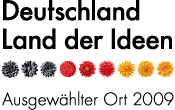News 2007
29-Apr-2008

Forscher der LMU München haben gezeigt, dass sich mit Hilfe von Silbernanoteilchen die Effizienz von Lichtsammelkomplexen enorm steigern lässt. Da es sich hierbei um die zentralen Funktionsträger für das Einsammeln von Licht bei der Photosynthese handelt, könnte diese Entdeckung bedeutsam für die Entwicklung neuartiger Hybrid-Solarzellen sein.
27-Dec-2007

Synthesis of ribosomal RNA (rRNA) by RNA polymerase (Pol) I is the first step in ribosome biogenesis and a regulatory switch in eukaryotic cell growth. Here we report the 12 A° cryoelectron microscopic structure for the complete 14-subunit yeast Pol I, a homology model for the core enzyme, and the crystal structure of the subcomplex A14/43. In the resulting ...
22-Dec-2007

Ensemble and single-molecule spectroscopy demonstrates that both emission and absorption of peridinin-chlorophyll-protein photosynthetic antennae can be largely enhanced through plasmonic interactions. We find up to 18-fold increase of the chlorophyll fluorescence for complexes placed near a silver metal layer. This enhancement, which leaves no measurable effects ...
21-Dec-2007

The amoeba Dictyostelium discoideum possesses genes for 13 different kinesins. Here we characterize DdKif3, a member of the Kinesin-1 family. Kinesin-1 motors form homodimers that can move micrometer-long distances on microtubules using the energy derived from ATP hydrolysis. We expressed recombinant motors in Escherichia coli and tested them in different in ...
18-Dec-2007

Nanomanipulation of biomolecules by using single-molecule methods and computer simulations has made it possible to visualize the energy landscape of biomolecules and the structures that are sampled during the folding process. We use simulations and single-molecule force spectroscopy to map the complex energy landscape of GFP that is used as a marker in cell ...
17-Dec-2007

Loss of function of the RNA helicase maleless (MLE) in Drosophila melanogaster leads to male-specific lethality due to a failure of X chromosome dosage compensation. MLE is presumably involved in incorporating the non-coding roX RNA into the dosage compensation complex (DCC), which is an essential but poorly understood requirement for faithful targeting of the ...
16-Dec-2007

In an acidic (pH 5.8) and lysine-rich environment Escherichia coli induces expression of the cadBA operon which encodes CadA, catalysing the decarboxylation of lysine to cadaverine, and CadB, the lysine/cadaverine antiporter. cadBA expression is dependent on CadC, a membrane-integrated transcriptional activator which belongs to the ToxR-like protein family and ...
15-Dec-2007

All nuclear RNA polymerases are phosphoprotein complexes. Yeast RNA polymerase I (Pol I) contains approximately 15 phosphate groups, distributed to 5 of the 14 subunits. Information about the function of the single phosphosites and their position in the primary, secondary and tertiary structure is lacking. We used a rapid and efficient way to purify yeast RNA Pol ...
14-Dec-2007

RNA polymerase II (Pol II) transcribes genes that encode proteins and noncoding small nuclear RNAs (snRNAs). The carboxyl-terminal repeat domain (CTD) of the largest subunit of mammalian RNA Pol II, comprising tandem repeats of the heptapeptide consensus Tyr1-Ser2-Pro3-Thr4-Ser5-Pro6-Ser7, is required for expression of both gene types. We show that mutation of ...
14-Dec-2007

RNA polymerase II is distinguished by its large carboxyl-terminal repeat domain (CTD), composed of repeats of the consensus heptapeptide Tyr1-Ser2-Pro3-Thr4-Ser5-Pro6-Ser7. Differential phosphorylation of serine-2 and serine-5 at the 5′ and 3′ regions of genes appears to coordinate the localization of transcription and RNA processing factors to the elongating ...
14-Dec-2007

Patters of phosphorylation in a region of RNA polymerase II may constitute a code that controls the recruitment of regulatory factors to control gene expression. Jeffry L. Corden puts CIPSM-researcher Dirk Eick's recent work on transcription in perspective. The development of higher forms of life would appear to have been influenced by RNA polymerase II. This ...
10-Dec-2007

The active center clefts of RNA polymerase (RNAP) from the archaeon Pyrococcus furiosus (Pfu) and of yeast RNAP II are nearly identical, including four protruding loops, the lid, rudder, fork 1 and fork 2. Here we present a structure–function analysis of recombinant Pfu RNAP variants lacking these cleft loops, and analyze the function of each loop at different ...
07-Dec-2007

Genome activity and nuclear metabolism clearly depend on accessibility, but it is not known whether and to what extent nuclear structures limit the mobility and access of individual molecules. We used fluorescently labeled streptavidin with a nuclear localization signal as an average-sized, inert protein to probe the nuclear environment. The protein was injected ...
07-Dec-2007
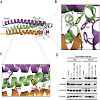
The Deutsche Forschungsgemeinschaft (German Research Foundation, DFG) announced yesterday the winners of its 2008 Gottfried Wilhelm Leibniz Prize. At its meeting on December 6th 2007, the DFG Joint Committee named CIPSM researcher Dr. Elena Conti as recipient of Germany's most highly endowed research award. Elena will receive 1.25 million euros flexibly over a ...
04-Dec-2007

Protein synthesis in the chloroplast is carried out by chloroplast ribosomes (chloro-ribosome) and regulated in a light-dependent manner. Chloroplast or plastid ribosomal proteins (PRPs) generally are larger than their bacterial counterparts, and chloro-ribosomes contain additional plastid-specific ribosomal proteins (PSRPs); however, it is unclear to what extent ...
29-Nov-2007

Periodic mesoporous materials formed through the cooperative self-assembly of surfactants and framework building blocks can assume a variety of structures1–3, and their widely tuneable properties make them attractive hosts for numerous applications4–7. Because the molecular movement in the pore system is the most important and defining characteristic of porous ...
29-Nov-2007

The motor protein kinesin ‘walks’ by alternately advancing its two motor structural domains. A cutting-edge, single-molecule fluorescencetechnique reveals further details of this stepping mechanism. Suppose that walking required energy input in the form of, say, one Gummi bear for every step. In what position would you pop the next Gummi bear into your mouth? ...
26-Nov-2007

After the complete sequencing of the human genome, one of the next important steps is to decipher the genetic mechanisms which allow cells to switch genes on and off. These processes are fundamental for cellular development. At the chemical level, gene silencing requires the selective methylation of of the C5-position of cytidines in DNA, and this established ...
24-Nov-2007

LV-peptides were designed as membrane-spanning low-complexity model structures that mimic fusion protein transmembrane domains. These peptides harbor a hydrophobic core sequence that consists of helix-promoting and helix-destabilizing residues at different ratios. Previously, the fusogenicity of these peptides has been shown to increase with the conformational ...
23-Nov-2007

CIPSM-Researcher and Speaker Thomas Carell wins the prestigious Otto-Bayer-Preis 2008 for his work of the understanding of light-triggered DNA-lesions. Thomas is a specialist for the synthesis of DNA-lesions and lesion analogues, and their incorporation into DNA-strands and the investigations of the resulting structures (x-ray, enzymatic digestion) and biological ...
22-Nov-2007
15-Nov-2007

RNA polymerase (Pol) II catalyses DNA-dependent RNA synthesis during gene tran- scription. There is, however, evidence that Pol II also possesses RNA-dependent RNA polymerase (RdRP) activity. Pol II can use a homopolymeric RNA template, can extend RNA by several nucleotides in the absence of DNA, and has been implicated in the replication of the RNA genomes of ...
15-Nov-2007

"There's great excitement here" “If the show is over in five years, then it was but a flash in the pan”
12-Nov-2007

CISPLATIN HAS BEEN USED to treat cancer for decades. But the drug's detailed molecular interactions with the enzymes it aims to interrupts have remained obscure. In two separate papers, researchers are now reporting the first crystal structures of cisplatin complexed with two key enzymes. "For the first time, we are getting deep insight on what goes on at the ...
11-Nov-2007

The anticancer drug cisplatin forms 1,2-d(GpG) DNA intrastrand cross-links (cisplatin lesions) that stall RNA polymerase II (Pol II) and trigger transcription-coupled DNA repair. Here we present a structure-function analysis of Pol II stalling at a cisplatin lesion in the DNA template. Pol II stalling results from a translocation barrier that prevents delivery of ...
11-Nov-2007
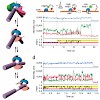
The general transcription factors (GTFs) of eukaryotic RNA polymerase II, in a process facilitated by regulatory and accessory factors, target promoters through synergistic interactions with core elements. The specific binding of the TATA box–binding protein (TBP) to the TATA box has led to the assumption that GTFs recognize promoters directly, producing a ...
09-Nov-2007
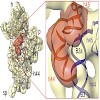
Ribosome binding factor A (RbfA) is a bacterial cold shock response protein, required for an efficient processing of the 5' end of the 16S ribosomal RNA (rRNA) during assembly of the small (30S) ribosomal subunit. Here we present a crystal structure of Thermus thermophilus (Tth) RbfA and a three-dimensional cryo-electron microscopic (EM) map of the Tth 30S.RbfA ...
09-Nov-2007

DNA polymerase eta (Pol eta) is a eukaryotic lesion bypass polymerase that helps organisms to survive exposure to ultraviolet (UV) radiation, and tumor cells to gain resistance against cisplatin-based chemotherapy. It allows cells to replicate across cross-link lesions such as 1,2-d(GpG) cisplatin adducts (Pt-GG) and UVinduced cis–syn thymine dimers. We present ...
09-Nov-2007

Site-directed mutagenesis (SDM) of target DNA is an invaluable tool to study protein structure–function relationships. Alanine-scanning mutagenesis has been successfully applied to systematically map functional binding epitopes. Substitution of target amino acids with alanine removes all side chain atoms past the b-carbon and does not introduce unusual backbone ...
07-Nov-2007

Degeneration of dopaminergic neurons in the substantia nigra is characteristic for Parkinson’s disease (PD), the second most common neurodegenerative disorder. Mitochondrial dysfunction is believed to contribute to the etiology of PD. Although most cases are sporadic, recent evidence points to anumberof genes involved in familial variants of PD.Amongthem, a ...
FTLD-U linked missense mutations in the progranulin gene reduce progranulin production and secretion
05-Nov-2007

Loss of function mutations in progranulin cause tau-negative frontotemporal lobar degeneration with ubiquitin positive inclusions. A major protein component of these inclusions is TDP-43, which becomes hyperphosphorylated, ubiquitinated and cleaved to generate C-terminal fragments, which apparently translocate from nuclei to the cytoplasm. Most progranulin ...
03-Nov-2007

Genome integrity is constantly threatened by DNA lesions arisin from numerous exogenous and endogenous sources. Survival depends on immediate recognition of these lesions and rapid recruitment of repair factors. Using laser microirradiation and live cell microscopy we found that the DNA-damage dependent poly(ADP-ribose) polymerases (PARP) PARP-1 and PARP-2 are ...
01-Nov-2007

An unselective cyclic peptide integrin ligand was sequentially N-methylated by a designed approach, where only the externally oriented (solvent exposed) amide bonds were N-methylated. The N-methylation resulted in tremendous enhancement in selectivity among the different integrin receptor subtypes (alpha5beta1, alphavbeta3, and alphaIIbbeta3). Conformational and ...
26-Oct-2007

In a recent issue of Molecular Cell, Dollins et al. (2007) present the crystal structure of Grp94, which highlights the similarity between Grp94 and Hsp90 and provides insight into the resting state of Grp94 and potentially other Hsp90 family members.
26-Oct-2007

The genome of the hyperthermophile archaeon Pyrococcus furiosus encodes two transcription factor B (TFB) paralogs, one of which (TFB1) has been characterized in transcription initiation. The second TFB (TFB2) is unusual in that it lacks recognizable homology to the archaeal TFB/eukaryotic TFIIB B-finger motif. TFB2 functions poorly in promoter dependent ...
26-Oct-2007

In a recent issue of Molecular Cell, Dollins et al. (2007) present the crystal structure of Grp94, which highlights the similarity between Grp94 and Hsp90 and provides insight into the resting state of Grp94 and potentially other Hsp90 family members.
25-Oct-2007

Peridinin–chlorophyll–protein (PCP), containing differently absorbing chlorophyll derivatives, are good models with which to study energy transfer among monomeric chlorophylls (Chls) by both bulk and singlemolecule spectroscopy. They can be obtained by reconstituting the N-terminal domain of the protein (N-PCP) with peridinin and chlorophyll mixtures. Upon ...
25-Oct-2007

Presenilin, the catalytic component of the gamma-secretase complex, type IV prepilin peptidases and signal peptide peptidase (SPP) are the founding members of the family of intramembrane cleaving GxGD aspartyl proteases. SPP-like (SPPL) proteases, such as SPPL2a, b, and c and SPPL3 also belong to the GxGD family. In contrast to gamma-secretase, where numerous ...
24-Oct-2007
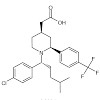
Alzheimer's disease (AD) amyloid beta-peptide (Aß) is generated via proteolytic processing of the ß-amyloid precursor protein (APP) by ß- and gamma-secretase. gamma-Secretase can be blocked by selective inhibitors but can also be modulated by a subset of non-steroidal anti-inflammatory drugs (NSAIDs) including sulindac sulfide. These drugs selectively reduce the ...
21-Oct-2007
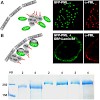
Green fluorescent proteins (GFPs) and variants thereof are widely used to study protein localization and dynamics. We engineered a specific binder for fluorescent proteins based on a 13-kDa GFP binding fragment derived from a llama single chain antibody. This GFP-binding protein (GBP) can easily be produced in bacteria and coupled to a monovalent matrix. The GBP ...
19-Oct-2007

Human apolipoproteinD(ApoD) occurs in plasma associated with high density lipoprotein. Apart from the involvement in lipid metabolism, its binding activity for progesterone and arachidonic acid plays a role in cancer development and neurological diseases. The crystal structures of freeApoDand its complex with progesterone were determined at 1.8A˚ resolution and ...
16-Oct-2007

RNA polymerases (Pol) II and III synthesize eukaryotic mRNAs and tRNAs, respectively. The crystal structure of the 12 subunit Pol II is known, but only limited structural information is available for the 17 subunit Pol III. Using mass spectrometry (MS), we correlated masses of Pol II complexes with the Pol II structure. Analysis of Pol III showed that the ...
09-Oct-2007
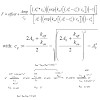
Grp94, the Hsp90 paralogue of the endoplasmic reticulum (ER), plays a crucial role in protein secretion. Like cytoplasmic Hsp90, Grp94 is regulated by nucleotide binding to its N-terminal domain. However, the question whether Grp94 hydrolyses ATP was controversial. This sets Grp94 apart from other members of the Hsp90 family where a slow but specific turnover of ...
05-Oct-2007

MicroRNAs (miRNAs) control gene expression by regulating mRNA stability and translation. Using cell-free in vitro systems, several labs have recently reported insights into the molecular mechanisms underlying miRNA-guided translational repression (Kiriakidou et al., 2007; Mathonnet et al., 2007; Thermann and Hentze, 2007; Wakiyama et al., 2007). These new ...
02-Oct-2007

A light-switchable peptide is transformed with ultrashort pulses from aß-hairpin to an unfolded hydrophobic cluster and vice versa. The structural changes are monitored by mid-IR probing. Instantaneous normal mode analysis with a Hamiltonian combining density functional theory with molecular mechanics is used to interpret the absorption transients. Illumination ...
01-Oct-2007

The import of proteins destined for the intermembrane space of chloroplasts has not been investigated in detail up to now. By investigating energy requirements and time courses, as well as performing competition experiments, we show that the two intermembrane space components Tic22 and MGD1 (E.C. 2.4.1.46) both engage the Toc machinery for crossing the outer ...
26-Sep-2007

Interactions of transmembrane helices play a crucial role in the folding and oligomerisation of integral membrane proteins. In order to uncover novel sequence motifs mediating these interactions, we randomised one face of a transmembrane helix with a set of non-polar or moderately polar amino acids. Those sequences capable of self-interaction upon integration ...
20-Sep-2007

The main purpose of homonuclear Hartmann–Hahn or TOCSY experiments is the assignment of spin systems based on efficient coherence transfer via scalar couplings. In partially aligned samples, however, magnetization is also transferred via residual dipolar couplings (RDCs) and therefore through space correlations can be observed in COSY and TOCSY experiments that ...
18-Sep-2007

Dynamic gene repositioning has emerged as an additional level of epigenetic gene regulation. An early example was the report of a transient, spatial convergence (<2 micro m) of oppositely imprinted regions (‘‘kissing’’), including the Angelman syndrome/Prader– Willi syndrome (AS/PWS) locus and the Beckwith–Wiedemann syndrome locus in human lymphocytes during late ...
18-Sep-2007

Channels directly gated by cyclic nucleotides (CNG channels) are important cellular switches that mediate influx of Na+ and Ca2+ in response to increases in the intracellular concentration of cAMP and cGMP. In photoreceptors and olfactory receptor neurons, these channels serve as final targets for cGMP and cAMP signaling pathways that are initiated by the ...
04-Sep-2007

The mammalian main olfactory epithelium (MOE) recognizes and transduces olfactory cues through a G protein-coupled, cAMPdependent signaling cascade. Additional chemosensory transduction mechanisms have been suggested but remain controversial. We show that a subset of MOE neurons expressing the orphan receptor guanylyl cyclase GC-D and the cyclic nucleotide-gated ...
20-Aug-2007

Quantum dot (QD) bioimaging has recently been described as the most exciting new technique to emerge from the collaboration of physicists and biologists. This new molecular imaging technology is based on the selective fluorescent labeling of biological molecules. QDs are fluorescent nanocrystals showing a wide-range absorption spectrum (400–650 nm) and a narrow, ...
17-Aug-2007

Transient or partial formation of complexes between biomacromolecules is a general mechanism used to control cellular functions. Several of these complexes escape structure determination by crystallographic means. We developed a new approach for determining the structure of protein dimers in the native environment (e.g., in the membrane) with high resolution in ...
17-Aug-2007

Direct observation of the folding of a single polypeptide chain can provide important information about the thermodynamic states populated along its folding pathway. In this study we present a lock-in force spectroscopy technique that improves resolution of AFM force spectroscopy to 400 fN. Using this technique we show that immunoglobulin domain 4 from ...
11-Aug-2007

Hemophilia A, one of the most severe bleeding disorders, results from an inherited deficiency of factor VIII (FVIII) function. Treatment by injection of FVIII has been a common procedure for decades. Nevertheless, the production and purification of FVIII remains a challenging task. Current procedures using immunoaffinity chromatography are expensive and suffer ...
10-Aug-2007

Infrared absorption experiments on light-triggered azobenzene peptides have been performed below and above the freezing point of the solvent dimethyl sulfoxide (DMSO). Even 20 K below the freezing point, illumination of the azobenzene chromophore resulted in IR absorption changes indicative of light-induced structural rearrangements of the peptide. In addition, ...
10-Aug-2007

gamma-Secretase is an intramembrane aspartyl protease complex that cleaves type I integral membrane proteins, including the amyloid beta-protein precursor (APP) and the Notch receptor, and is composed of presenilin, Pen-2, nicastrin and Aph-1. Although all four of these membrane proteins are essential for assembly and activity, the stoichiometry of the complex is ...
01-Aug-2007

How does RNA polymerase II cooperate with initiation factors to locate transcription start sites throughout the genome? A new cross-linking approach reveals previously unknown initiation factor–binding sites on the polymerase surface. The resulting model of the transcription initiation complex suggests that initiation factors cooperate above and inside the ...
27-Jul-2007

Small interfering RNAs (siRNAs) and microRNAs (miRNAs) guide distinct classes of RNA-induced silencing complexes (RICSs) to repress mRNA expression in biological processes ranging from development to antiviral defense. In Drosophilia, separate but conceptually similar endonucleolytic pathways produce siRNAs and miRNAs. Here, we show that despite their distinct ...
27-Jul-2007
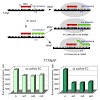
During gene transcription, RNA polymerase (Pol) II encounters obstacles, including lesions in the DNA template. Here, we review a recent structure–function analysis of Pol II transcribing DNA with a bulky photo-lesion in the template strand. The study provided the molecular basis for recognition of a damaged DNA by Pol II, which is the first step in ...
16-Jul-2007

In addition to miRNAs and siRNAs, a third small RNA silencing system has been uncovered that prevents the spreading of selfish genetic elements. Production of the Piwi-associated RNAs (piRNAs), which mediate the silencing activity in this pathway, is initiated at a few master control regions within the genome. The nature of the primary piRNA-generating transcript ...
06-Jul-2007

Gamma-Secretase is involved in the production of amyloid beta-peptide, which is the principle component of amyloid plaques in the brains of patients with Alzheimer disease. Gamma-Secretase is a complex composed of presenilin (PS), nicastrin, anterior pharynx-defective phenotype 1 (Aph1) and PS enhancer 2 (Pen2). We previously proposed a mechanism of complex ...
05-Jul-2007

The molecule HTI, which combines hemithioindigo and hemistilbene molecular parts, allows reversible switching between two isomeric states. Photochromic behaviour of the HTI molecule is observed by irradiation with UV/Vis light. The photochemical reaction, a Z/E isomerization around the central double bond connecting the two molecular parts, is investigated by ...
02-Jul-2007
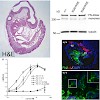
Fibronectin (FN) is secreted as a disulfi de-bonded FN dimer. Each subunit contains three types of repeating modules: FN-I, FN-II, and FN-III. The interactions of α5β1 or αv integrins with the RGD motif of FN-III repeat 10 (FN-III10) are considered an essential step in the assembly of FN fi brils. To test this hypothesis in vivo, we replaced the RGD motif with ...
02-Jul-2007
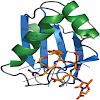
The U2AF-homology motif (UHM) mediates protein-protein interactions between factors involved in constitutive RNA splicing. Here we report that the splicing factor SPF45 regulates alternative splicing of the apoptosis regulatory gene FAS (also called CD95). The SPF45 UHM is necessary for this activity and binds UHM-ligand motifs (ULMs) present in the 3' splice ...
01-Jul-2007

To reveal the mechanism of processive strand separation by superfamily-2 (SF2) 3'-5' helicases, we determined apo and DNA-bound crystal structures of archaeal Hel308, a helicase that unwinds lagging strands and is related to human DNA polymerase h. Our structure captures the duplex-unwinding reaction, shows that initial strand separation does not require ATP and ...
19-Jun-2007

During gene transcription, RNA polymerase (Pol) II encounters obstacles, including lesions in the DNA template. Here, we review a recent structure–function analysis of Pol II transcribing DNA with a bulky photo-lesion in the template strand. The study provided the molecular basis for recognition of a damaged DNA by Pol II, which is the first step in ...
14-Jun-2007

The Strep-tag II is an eight-residue minimal peptide sequence (Trp-Ser-His-Pro-Gln-Phe-Glu-Lys) that exhibits intrinsic affinity toward streptavidin and can be fused to recombinant proteins in various fashions. We describe a protocol that enables quick and mild purification of corresponding Strep-tag II fusion proteins—including their complexes with interacting ...
14-Jun-2007

The photochromicity of fulgimides rests on the existence of open (E) and closed ring (C) isomers. As predicted by the Woodward-Hoffmann rules both isomers can photochemically be interconverted. This interconversion has been studied by femtosecond fluorescence and transient absorption spectroscopy. For either direction (E toC cyclization and C to E cycloreversion) ...
01-Jun-2007
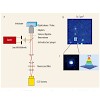
Auf welchem Weg dringt ein Virus bei einer Infektion in eine Zelle ein? Wie bewegen sich Motorproteine in Zellen oder einzelne Moleküle in nanoporösen Materialien? Das Verfolgen (Tracking) einzelner Teilchen unter dem Fluoreszenzmikroskop erlaubt es, diese und ähnliche Fragen aus der Biophysik, der Medizin und den Materialwissenschaften zu beantworten.
12-Apr-2007

A novel type of non-linear Raman microscopy, femtosecond stimulated Raman microscopy (FSRM), is introduced. It employs femtosecond white light pulses and intense picosecond pulses which are derived from a femtosecond laser/amplifier system. The pulses are coupled into a microscope set-up and induce a stimulated Raman process at the focus. The Raman interaction ...
20-Feb-2007

The bacteriophage Phi29 uses a molecular motor to drive its genome into a preformed protein capsid. The central part of this molecular motor is formed by a ring of twelve proteins called the connector. Symmetry and structural arguments have let to the so called rotation hypothesis, i.e. a rotation of the connector is used to drive the DNA into the capsid, which ...
09-Feb-2007

Cells use transcription-coupled repair (TCR) to efficiently eliminate DNA lesions such as UV-induced cyclobutane pyrimidine dimers (CPDs). Here we present the structure-based mechanism for the first step in eukaryotic TCR, CPD-induced stalling of RNA polymerase (Pol) II. A CPD in the transcribed strand slowly passes a translocation barrier, and enters the ...
29-Jan-2007

The assembly of the gamma-secretase complex, an Alzheimer disease-related protease required for ß-amyloid generation, is tightly regulated and predominantly limited by the stoichiometrical availability of its components. We have identified a novel endoplasmic reticulum-located protein complex that is regulatedin a similar fashion. It contains the recently ...


